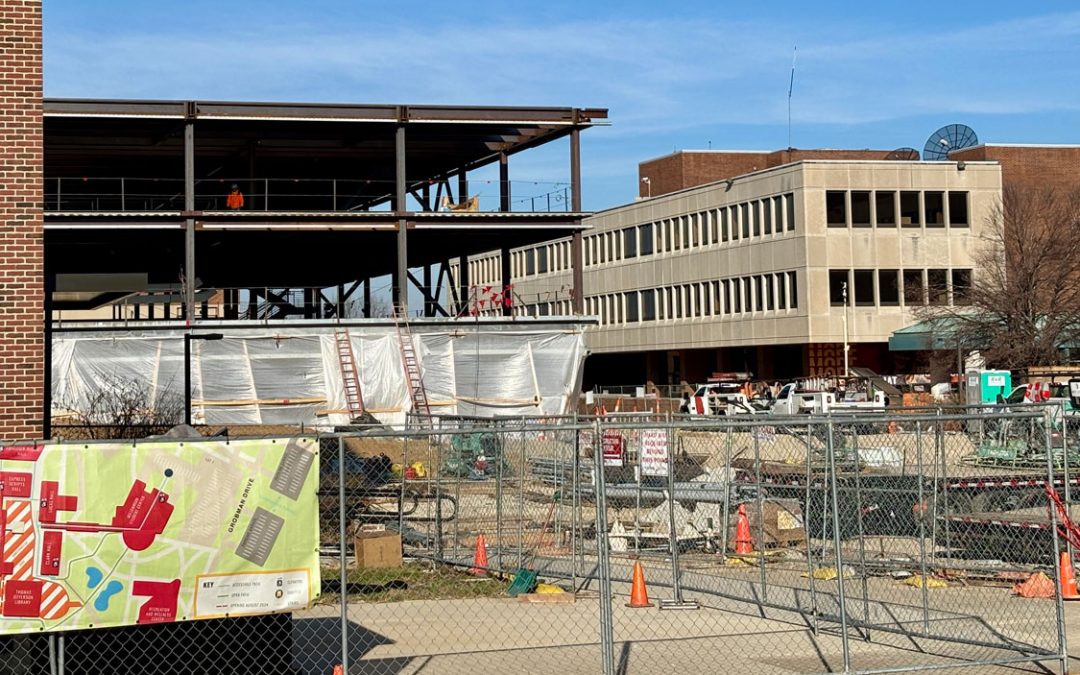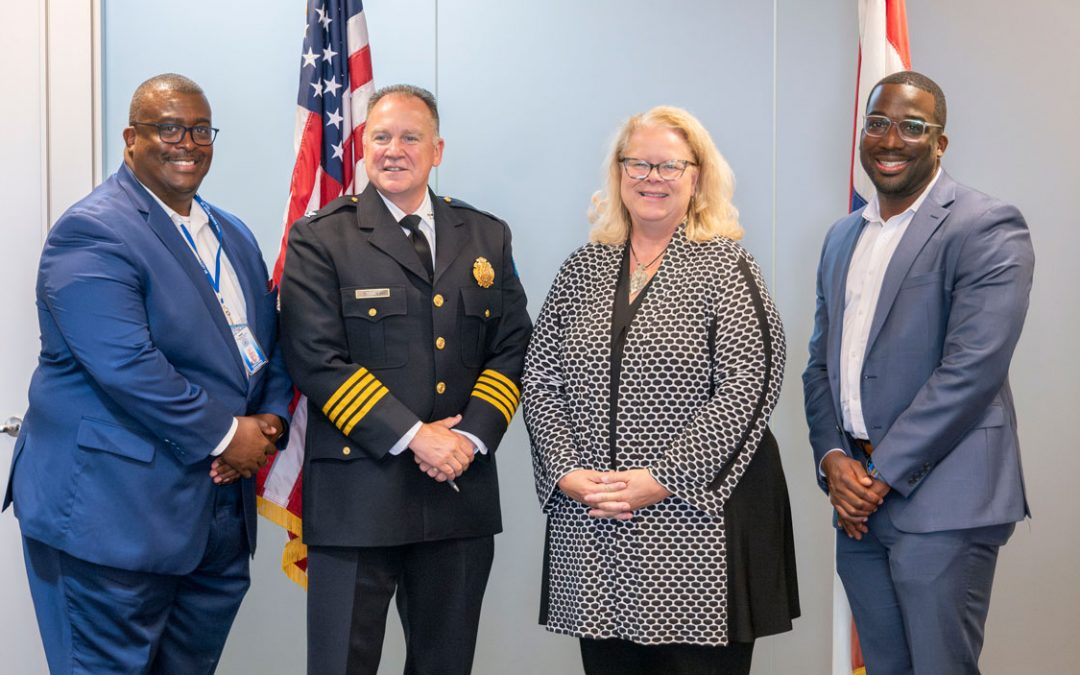
It’s been almost five years since Charley Schmitz retired from UMSL, but the time has flown by for the former College of Education dean. He and his wife, Liz, have traveled to all seven continents – including Antarctica – in their continued quest to uncover the secrets to a successful marriage. (Photos courtesy Charles and Elizabeth Schmitz)
Just before Valentine’s Day and approaching their 50th year of marriage, Charles and Elizabeth Schmitz share a laugh while recalling a memorable interview from one of their international adventures.
The long-time relationship experts are seated together in the Millennium Student Center at the University of Missouri–St. Louis, where Charley retired as dean of the College of Education in 2010. Since then, the two have been mostly on the move, studying successful marriages around the world in an effort to strengthen other ones.
“They were supposed to be magnificent,” says Liz, describing their session with a rich, long-married couple in Brazil that had come highly recommended for their research project. “They put on a great face in public – but it was quickly obvious they had nothing in common, and they hated each other – 52 years’ worth!”
Whether they’re interacting with members of a nomadic tribe in Tanzania or scientists in Antarctica who spend months away at a time from their spouses, the Schmitzes are still asking questions similar to the one they began asking 33 years ago: What makes a successful marriage tick?
“We started small, trying to figure out what makes some marriages succeed where others fail, and we found a real commonality,” Liz says. “The further we went, and the more different cultures we sought to investigate, we kept finding the same results.”

Charley and Liz Schmitz have published multiple award-winning books. (Click on the photo to enlarge it.)
They bid farewell to demanding careers in education a few years ago – Charley most recently at UMSL, where he brought new technology, innovation and funding to the College of Education. Since then, the Schmitzes have been able to devote more time and energy to what has become a lifelong passion.
“Our goal has always been to help people in what is, for most, the most important relationship they’ll ever be engaged in during their life,” Charley says. “And that’s where we get our satisfaction.”
Traveling to all 50 states, all seven continents, nine Canadian provinces and 49 countries thus far, the Schmitzes say their efforts have grown due to curiosity and a genuine desire “to get people to the happily-ever-after.”
“We see models all over the world for successful marriages,” Charley says, noting that planned trips this spring to Finland and Hungary will bring the total to 51 countries. “We also have a lot of fun. We’ve seen things in the world that we never would have if we hadn’t engaged in this work.”
“It’s more exciting every day,” Liz adds. “The treasure and the beauty of being able to see these great couples – to listen to the stories, to have our own relationship that works, to have learned the lessons from all these folks – it’s incredible.”
Following their first book, “Golden Anniversaries: Seven Secrets to Successful Marriages,” the Schmitzes have since published three more award-winning volumes: “Simple Things Matter in Love and Marriage,” “Building a Love that Lasts,” and “How to Marry the Right Guy.”
That’s in addition to a robust online presence, Liz adds, including their Simple Things Matter blog and various regular pieces for other websites.
“Charley does the yeoman’s work of the drafting,” she says. “I tear it apart, re-write … I do all of the posting, all of the web work, all of the electronic part of our life.”
Not all of their work takes them far from home. On July 9, the Schmitzes will keynote the national Better Marriages Conference taking place in St. Louis. And despite all of the sights and cultures the two have enjoyed during their travels, the special affection for their home base is obvious.
“If St. Louis is not a world-class city, then how do you explain our orchestra, our museums, our science center, our great academic institutions?” says Charley, who is a strong advocate for regional unification.
Since retiring from UMSL, Charley has given more than 100 speeches on the topic of reuniting the city of St. Louis and St. Louis County, which split up over a century ago.
“Whether it’s a civic group, rotary club – you name it, I spoke to it,” Charley says. “We made a big mistake in 1876 – the great divorce. We’ve gotta get remarried.”
“The separation hurts us in millions of ways. Does our skyline look like a city of 300,000 people? Come in from the east side at night – it looks like a city of a million people! Because that’s what it really is.”
Liz notes that just because the two of them have officially retired doesn’t mean they’re not conducting research as actively as ever. Charley nods and chimes in.
“People ask me, ‘Do you miss being dean?’ I say ‘No.’ ‘Why?’ ‘Because I’m so damn busy!'”














